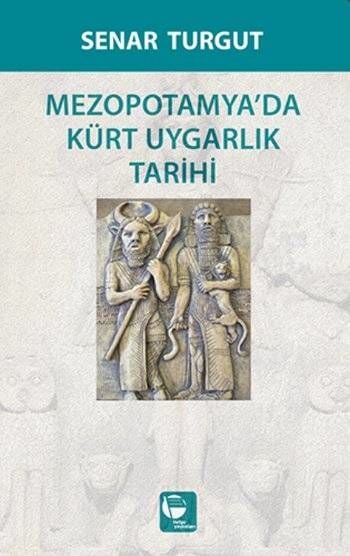Last remaining product:
0

History of Kurdish Civilization in Mesopotamia
(0) Comment - 0 Point
Author
Stock
0 Piece
Stock code
BELGE000012
stock status
Out of stock
Publishers
Price
0,68 USD + VAT
*starting from 0,10 USD!
%20 discount
0,68 USD
0,55 USD
Kurds are undoubtedly one of the most ancient, most original and most mysterious peoples of the Middle East. Just like the Armenians, Aramaeans, Assyrians, Assyrians, Chaldeans, Nestorians, Hebrews and Shamsis with whom they share the same geography... Their lifestyles, beliefs and languages are so intertwined. You can find roots of every color in tribal order, nomadism and settled agricultural societies, dating back thousands of years. Later, Turkmens and Arabs joined this ancient common life and became the salt and pepper of the region. Sumerian tablets with cuneiform script are found in Aratta, in the north of Mesopotamia. He talks about a land called. There was an extremely vital connection between the country of Aratta and the country of Sumer. The stones on which ziggurats were built came from the north by river. And wheat to the north... According to the epics, the highest priest ruled in Aratta and Sumer. The boats in which they float along the river from Assyria down to Babylon are round and completely covered with leather. In Armenia, in the north of Assyria, they cut willows and prepared the ribs of the boats, which they covered with leather, just as they covered the bottom of the boats. They sometimes prepared these boats very large, sometimes smaller. The first historian Homer tells that the largest of these had the power to carry five thousand talents. Hakkari Nestorians. (whose beliefs once reached China via the Silk Road) lived in a tribal system and spoke Kurdish. Many travelers in the 19th century also described them as Christian Kurds. The roots of the Kurds, one of the authentic people of the region, go back to the age of the Sumerians, like the Armenians. There are traces of both Karduks and Medes in them; Like traces of Urartian in Armenians... Xenophon, who mentions the Assyrian country in his famous epic work "Anabasis, Return of the Ten Thousand", also tells the mysterious story of the Karduks.
| Publisher | : | Document Publications |
| Number of pages | : | 200 |
| Publication Year | : | 2015 |
| ISBN | : | 2789785955627 |
| The heart | : | Turkish |
Be the first to review this product!
Kovareke giranbiha
O... K... | 30/05/2025
Kürtler için yapılmış güzel şeylerden bir tanesi
M... A... | 16/04/2025
siparişler hızlıca ulaşıyor, kategori çok. beğendim.
A... U... | 05/04/2025
Sizlerden gayet memnunum emeğinize sağlık
M... A... | 12/03/2025
Harikaydı
Serdar KÖMÜRCÜ | 22/01/2025
Gayet pratik ve hoş
Muzaffer Bora | 12/01/2025
Hızlı teslimat sağlandı .çok iyi bir şekilde bantlanmış teşekkürler. Gayet memnunum. Xwedê we bihêle .
A... Y... | 11/01/2025
&ddjmsd
RODEM ÇAÇAN | 06/01/2025
Sizi seviyorum Pırtukakurdi
Birsen KORKMAZ | 11/12/2024
Berbat
Sema Koç Soğancı | 29/11/2024


